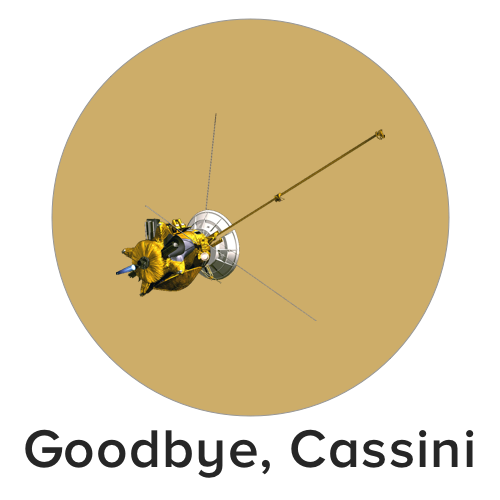Cassini: A History In Interviews
For 20 years, Cassini’s scientists have shared their discoveries with Science Friday listeners. Here are some of the most memorable moments.
This article is part of our special coverage of Cassini. Listen to our farewell to Cassini in its final moments and marvel at the astounding images the orbiter took of Saturn and its moons. Plus, did you know the Cassini team has their own choir?
 Cassini’s descent into Saturn, ending its 20-year journey through our solar system, represents an uncommonly poignant moment for the scientists who have worked on the craft. And those of us who have followed Cassini’s path and marveled at the breathtaking images it sent back are affected as well.
Cassini’s descent into Saturn, ending its 20-year journey through our solar system, represents an uncommonly poignant moment for the scientists who have worked on the craft. And those of us who have followed Cassini’s path and marveled at the breathtaking images it sent back are affected as well.
Part of the reason that losing Cassini feels like losing an old friend is because we’ve been talking about its voyage for 20 years. Cassini helped us better understand Saturn and its moons, from the planet’s giant storms to the hidden surface of Titan. Along the way, the Cassini team appeared regularly on Science Friday, sharing with our listeners the amazing new discoveries the craft made.
So, as Cassini makes its final plunge into the depths of Saturn, we invite you to take a walk back into the SciFri archives and enjoy some of Cassini’s greatest hits.
Planetary scientist Carolyn Porco joins Ira to talk about Cassini’s pit stop at Jupiter.
NASA Ames scientist Jeff Cuzzi talks about Cassini’s arrival at Saturn and its first plunge between the famous rings.

Deputy project scientist Linda Spilker gives an update on the Cassini mission, including its then-upcoming look at the surface of Titan.
Alfred McEwen, leader of Titan’s surface imaging plan, joins Ira to talk about the first images from Titan.
“The payoff just came moments ago!”
Bonnie Buratti, co-investigator on the Cassini Science Team, gives an update.
Kevin Baines, Cassini scientist, discusses Saturn’s hexagonal storms.
Jonathan Lunine, professor of planetary science & physics at the University of Arizona, Tuscon, joins Ira to discuss Titan’s chemistry.
The Cassini mission to Saturn has brought us visions of the gas giant’s icy satellites, a new understanding of where life may be possible, and gorgeous photos of Saturn’s storm systems and rings. Now, running out of fuel, the orbiter will spend its last months getting its closest-ever look at the rings, then dive between them and the planet to “taste” the atmosphere. NASA scientist James Green discusses Cassini’s final voyage.
NASA scientists poured one out for the Cassini orbiter as it made its fiery plunge into Saturn’s atmosphere. The end of the mission is also the end of an era. Cassini was the last of the “big” probes to other planets, before NASA switched to smaller, more focused, and cost-efficient missions.
In this emotional farewell, producers Chris Intagliata and Christie Taylor report from NASA’s Jet Propulsion Laboratory (JPL), where mission scientists observed the last ping of signal from the orbiter. Plus, Ira speaks with project scientists who reminisce on Cassini’s legacy.
Brandon Echter was Science Friday’s digital managing editor. He loves space, sloths, and cephalopods, and his aesthetic is “cultivated schlub.”